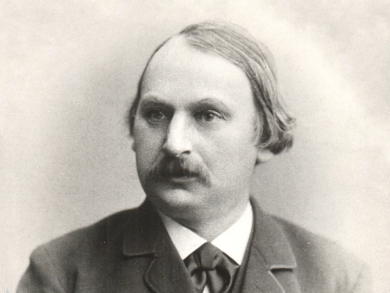The prolific German chemist Adolph Frank was born on January 20, 1834, in Cloetze. He started an apprenticeship in a pharmacy when he was 14 years old, a common way to study chemistry at the time. He later studied pharmacy at the University of Berlin, Germany, and became a certified apothecary in 1857. However, his interest soon turned to technical chemistry.
As early as 1858, Frank received his first patent for a process to purify sugar beet juice, which caused him to be offered a position at a sugar refinery in Staßfurt, Germany. He continued his studies and received his Ph.D. in chemistry from the University of Göttingen, Germany, in 1862 for work on the production of sugar.
It was in Staßfurt that Frank made his biggest impact on the chemical industry: a nearby salt mine produced copious amounts of underused potash, which contains the important plant nutrient potassium. Frank saw the potential for agricultural use and was responsible for founding the first potassium salt plant in Germany. He served as director general of the potassium plants in Staßfurt and Leopoldshall until 1876.
In 1865, Frank found a way to use the bromine-rich waste from the potash industry to produce iodine-free bromine. This caused a significant price drop for the element and opened up new uses, e.g., as a disinfecting agent. He moved to Charlottenburg in 1876 as scientific supervisor of the local glass factory. He is said to have come up with the brown glass of beer bottles, which better protects the beverage from light than the previously used green glass.
Another one of Adolphs Franks many interests was the fixation of atmospheric nitrogen. In 1898, together with his son Albert and his colleague Nikodem Caro, he found that calcium carbide can react with nitrogen at high temperatures to form calcium cyanamide (CaCN2, “nitrolime”). It is used as a fertilizer and releases ammonia upon contact with water. This eponymous “Frank-Caro process” was the first commercial process to fixate atmospheric nitrogen. It was rendered mostly obsolete for the production of ammonia a decade later by the more efficient Haber-Bosch process.
Frank also was instrumental in the development of the German carbide- and acetylene industry, his work was especially concerned with safety aspects and the prevention of explosions. One of his last fields of research was the production of hydrogen gas for the use in blimps, which turned out to also be useful for fat hardening. Adolph Frank died on May 30, 1916, in Charlottenburg (in today’s Berlin).
Adolph Frank is the answer to Guess the Chemist (53).
Sources
- Obituary: Adolph Frank (in German),
H. Grossmann,
Angew. Chem. 1916, 29, 373–377.
DOI: 10.1002/ange.19160298502 - Obituary: Adolph Frank (in German),
N. Caro,
Chemiker-Zeitung 1916, 79/80, 569.
Selected Publications
- Die Nutzbarmachung des freien Stickstoffs der Luft für Landwirtschaft und Industrie (in German),
A. Frank,
Angew. Chem. 1903, 16, 536–539.
DOI: 10.1002/ange.19030162303 - Zur Nutzbarmachung des atmosphärischen Stickstoffs (in German),
F. Rothe, A. Frank,
Angew. Chem. 1903, 16, 658-659.
DOI: 10.1002/ange.19030162708
Also of Interest
- 75th Anniversary: Carl Bosch’s Death,
ChemViews Mag. 2015.
Nobel Laureate and co-inventor of the Haber-Bosch process (1874 – 1940) - 80th Anniversary of Fritz Haber’s Death,
ChemViews Mag. 2014.
Fritz Haber, who received the 1918 Nobel Prize in Chemistry for the synthesis of ammonia from its elements, died January 29, 1934 - Quizzes in ChemViews Magazine




